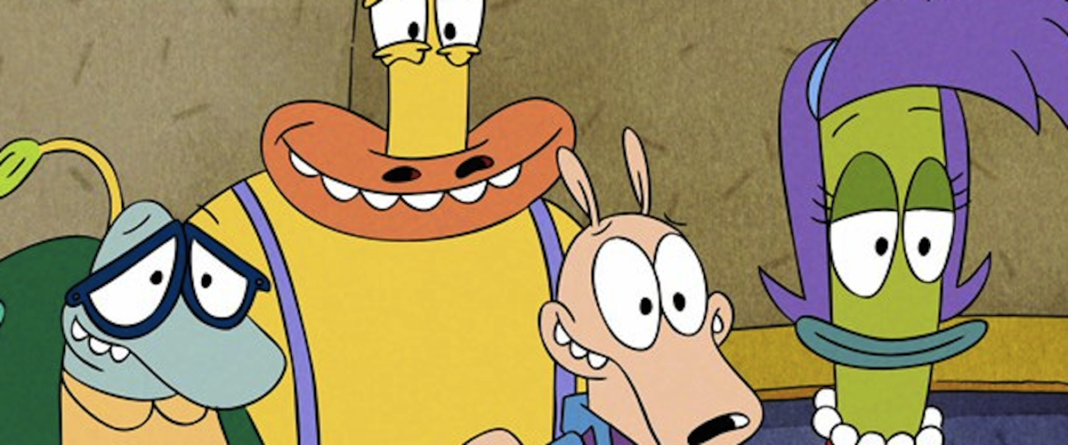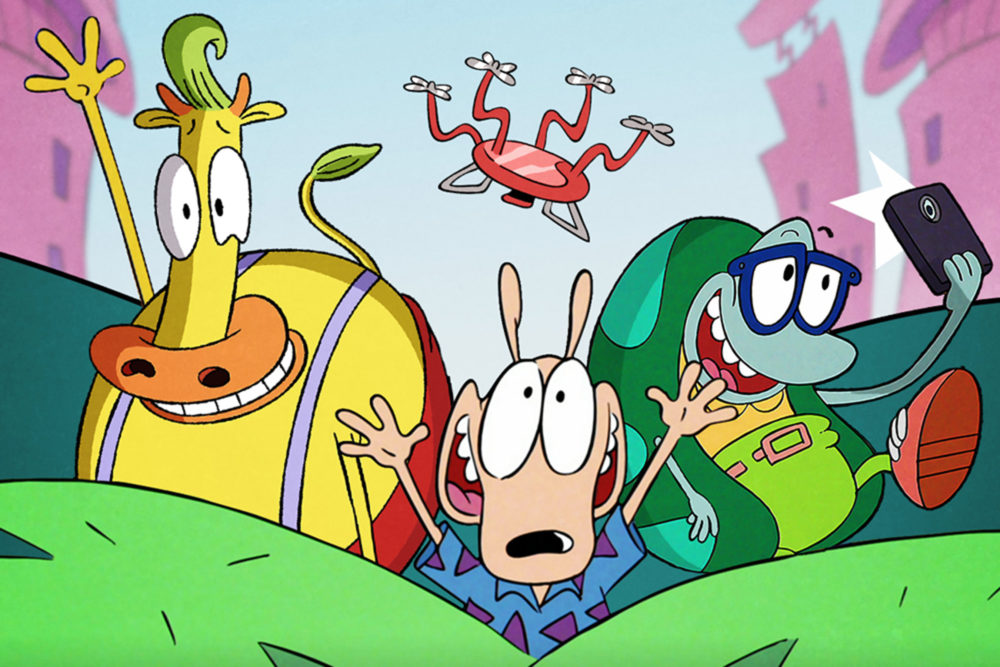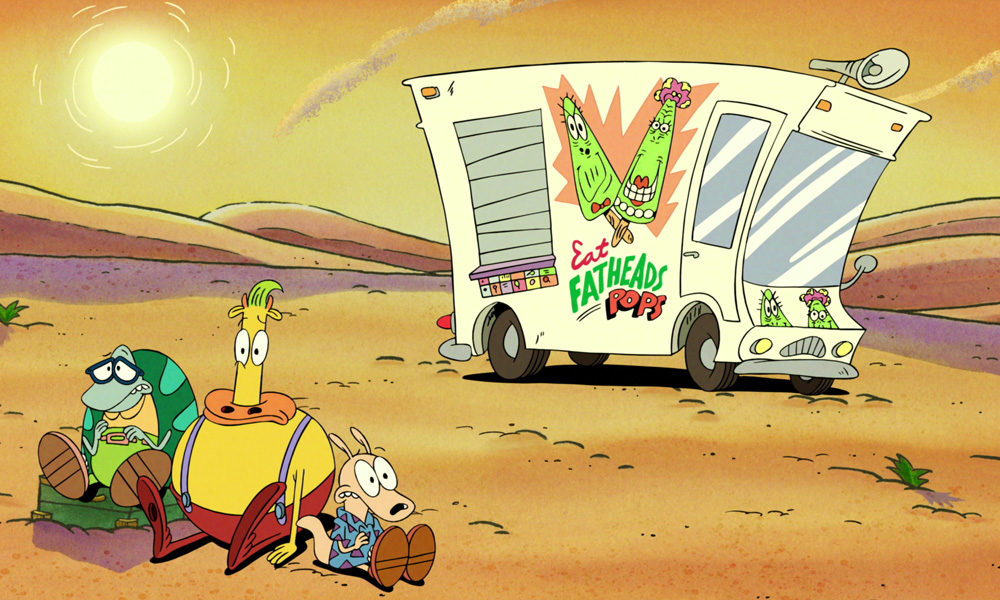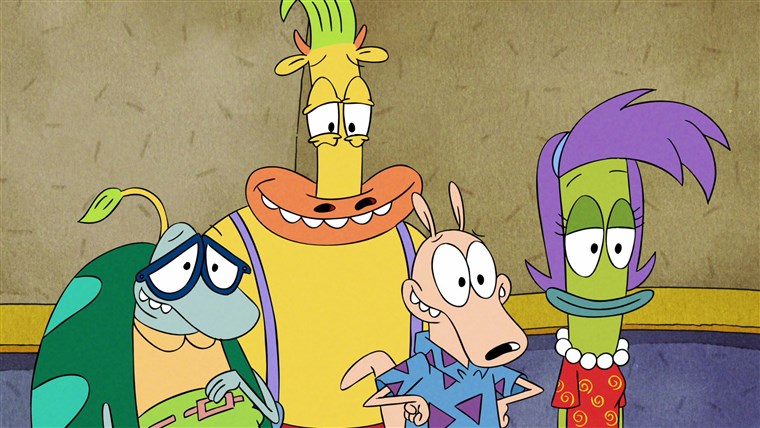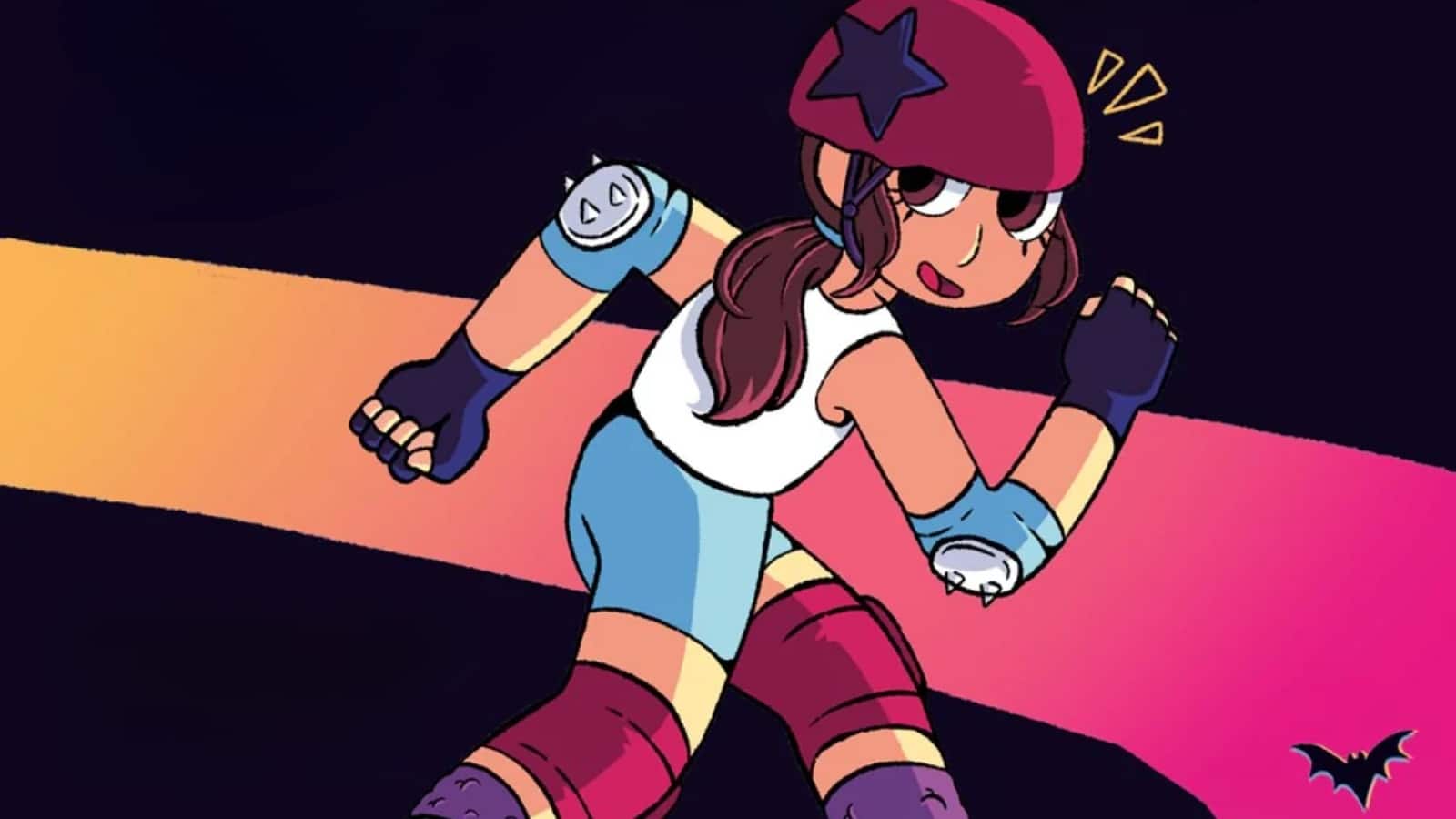Two decades after being launched into space, Rocko is returning to O-Town in the Netflix original movie Rocko’s Modern Life: Static Cling.
But things aren’t the same as they were when Rocko, Heffer, and Filburt left earth in the ’90s. While his friends immediately take to the Buzzbucks on every corner and the omnipresent O-Phones, Rocko finds himself at a loss when he learns that his favorite cartoon, The Fatheads, has been off the air for years.
“This show is all I have,” declares Rocko, who can’t seem to adjust to a world full of radioactive energy drinks and digitally altered selfies. Desperate for the return of his favorite show, he turns to his next-door neighbors the Bigheads to find out where their child – the creator of The Fatheads – has gone. But with Ed Bighead having been fired from his job at Conglom-O due to an accounting error, the Bighead family home is in danger of being demolished and replaced with an unemployment office. Seeing a way to have his Chokey Chicken and eat it, too, Rocko resolves to ensure his favorite show is brought back (or at least given a special).
When Rocko, Heffer, and Filburt locate Rachel, creator of the Fatheads, they discover that she has come out of the closet and is now living authentically as a woman. The fact that Rachel is a trans woman is never treated by a joke by Static Cling, and the moment when Rocko and friends discover this detail about her is handled magnificently: after a second of blinking, all three immediately affirm her decision to openly live as herself.
Rachel’s transition is handled in an authentic manner: while Static Cling picks up the basic plot beats from her earlier appearances on the series in the episodes “I Have No Son” and “Wacky Delly,” it takes time to acknowledge that in spite of the success of the Fatheads, its creator just couldn’t find personal happiness. In spite of professional and commercial success, the fact that Rachel wasn’t living as her authentic self was preventing her from being happy, and she was compelled to embark on a soul-searching journey.
However, everyone isn’t as immediately accepting of Rachel. While Bev Bighead immediately embraces Rachel (every trans woman deserves a maternal figure ready to shower her with cute shoes in her size), Ed – still reeling from the intense amount of change he faces between his loss of employment and the threat to the security of his home – at first rejects his daughter.
Nevertheless, his inability to immediately accept the changes his daughter has undergone is handled in a tasteful manner, and Rocko is able to help Ed realize that while the past can still be cherished, it does no good to obsess over one’s memories at the expense of the present.
Just as it did on the original series, The Fatheads serves a metafictional purpose in Static Cling. At the beginning of the story, as they drift through space, Rocko and friends are forced to entertain themselves with an orange-colored VHS tape that includes only 3 episodes of the original Fatheads series – a clear parallel to the Nicktoon Home Video releases of the ’90s. Further, the creation of The Fatheads special in the narrative provides commentary on the creation of Static Cling that leans heavily on the fourth wall (and features an outstanding cameo appearance by the infamous Chameleons as “experts” in computer-generated animation).
In the episode “I Have No Son,” it’s plain that Rachel was inspired by her parents when creating the starring characters of The Fatheads, and at the end of that episode, we see that she has added a character inspired by Rocko. Near the conclusion of Static Cling, when Rachel is finally convinced to animate The Fatheads revival, for the first time, she includes a character inspired by herself. It is extremely meaningful that it is only after her transition that she is able to include herself in her work.
While Static Cling includes plenty of characters, allusions, and even continuity from the original series, it makes a point of grounding the series firmly in the present, which is an essential component for the success of the feature: it is, after all, Rocko’s modern life. Although returning fans are likely to get the most out of Static Cling, those unfamiliar with the series will still find plenty here to enjoy, as well – and where else are you going to find tasteful transgender rep alongside gross-out booger jar jokes?
Rocko’s Modern Life: Static Cling is available now on Netflix.



